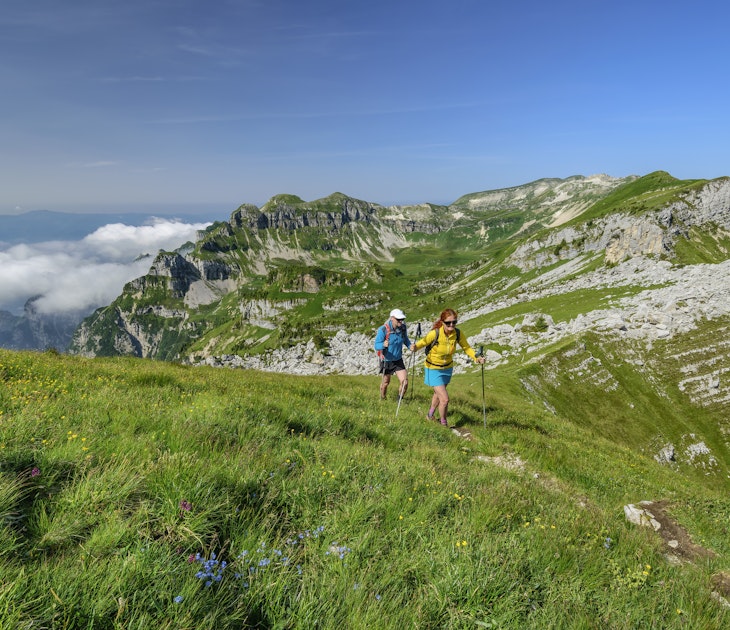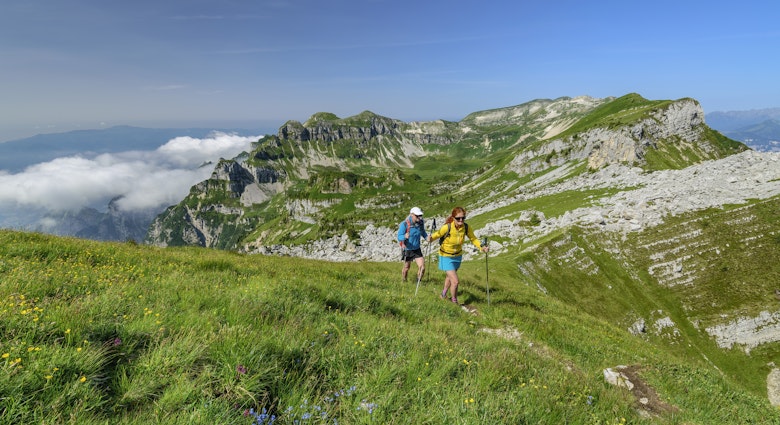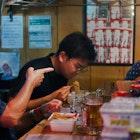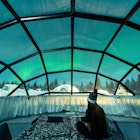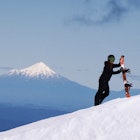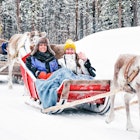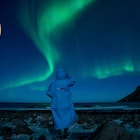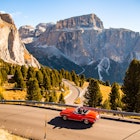In Finland’s Turku archipelago, a borderland of islands preserves Nordic traditions, astonishing natural beauty and some disquieting memories. Explore the rich history and stark landscapes with Marcel Theroux of Lonely Planet Traveller magazine. Images by James Bedford.
The Nordic countries’ tallest lighthouse stands 52m above the waves, on the island of Bengtskär. Image by James Bedford / Lonely Planet Traveller.
Fishing on the island of Stenskär
Out in the brackish waters of the Baltic Sea lies the tiny island of Stenskär – Stone Island – named for the granite boulder on its summit, left behind by a departing glacier in the last ice age. The island is kidney-shaped and it’s a 10-minute walk from tip to tail.
One sunny evening in early August, Stig Jansson is rinsing fishing nets at his boathouse on the island, while his son-in-law Jarmo Ylitelo cuts perch fillets to be smoked and sold. The pink granite of Stenskär, its pine forest and encompassing sea have been Stig’s home for 81 years. ‘I was supposed to retire 20 years ago, but somehow it never happened,’ Stig says as he pilots the boat out to the nets and watches Jarmo reel them in. ‘The younger generation needs a hand.’
Jarmo Ylitelo untangles fishing nets on Stenskär. Image by James Bedford / Lonely Planet Traveller.
Stenskär is part of the island chain that fans out from Finland’s southern city Turku like a handful of gravel thrown into the Baltic. Its 20,000 or so islands make it one of the largest archipelagos in the world, encompassing every size and shape, from grynnor – tiny bald outcrops – to öar – islands with woods and lakes that are big enough to support small towns. The most widely spoken language is Swedish – a legacy of the region’s many centuries under Swedish rule.
It’s a 90-minute drive from the airport at Turku to the island of Nagu, one of the gateways to the archipelago. From here, free public ferries head out to the surrounding islands. The archipelago is a place of deep silences and enchantment; even in summer, when its population is swollen by visitors who have come to unwind in their summer houses and stock up on sunlight for the winter ahead.
Cinnamon korvapuusti (‘slapped ears’) are a Finnish breakfast staple. Image by James Bedford / Lonely Planet Traveller.
Farming in Turku's back-country
The mouthwatering smell of freshly baked cinnamon buns rises from a bakery. Five minutes outside town, I find myself cycling a rented bike along a deserted road. Wind rustles the rye fields. There are a few feathers of high white cloud in an otherwise blue sky. I’m overwhelmed by the silence and space. The roadside is carpeted with bilberries, lingonberries, wild strawberries and, if you look carefully, caches of chanterelles.
Margot Wikström farms four hectares of berries at Tackork Farm in the island’s back-country. Margot lives alone in the huge farmhouse, growing berries in the summer, managing her forest in the winter. She’s succeeded in taking up farming from scratch. She came here 10 years ago, quitting her job in a bank to start a new life as a farmer.
‘People told me, “You’ll never do it, you cannot do it.”’ She might be atypical of the region’s farmers, but Margot follows in a long tradition of island resourcefulness and formidable Finnish women. Finland was the first country in the world to grant unrestricted voting rights to women in 1906, and elected its first female president in 2000.
An array of berries. Image by James Bedford / Lonely Planet Traveller.
Bengtskär's solitary lighthouse
In summer, the waterways between the islands teem with life. There is every kind of watercraft: passenger ferries, car ferries, sailing yachts, rowing skiffs, motorboats. Most thrilling of all are the rigid inflatable boats that whiz between the islands, cutting hour-long journeys to a matter of minutes.
Standing on an inflatable, holding on tightly, I feel like I’m watching the journey on fast forward. The islands rip past. The scene judders as the boat bounces over a series of waves. The tower of Bengtskär lighthouse appears in the distance, like a factory chimney upon an L-shaped chunk of granite. The building is faced with granite quarried from the island and, in bright sunshine, it presents a slightly fearsome aspect: half Colditz, half Hogwarts. It was built in 1906 to make this route secure for ships. West of the lighthouse lies a treacherous array of rocks and shallows. Aside from the lighthouse and a few outbuildings, there is virtually nothing here except bare rock and a few wildflowers – knapweed, wild pansies – that have somehow found enough soil to grow in.
The boat trip to the tiny island of Bengtskär. Image by James Bedford / Lonely Planet Traveller.
Sjalo: a tranquil island with a curious past
On its way to Hanka, the boat puts in at Sjalo, a wooded island only a few miles wide, with no cars. The air of timeless peacefulness on Sjalo is deceptive. From 1619, Sjalo housed a leper colony. When the last leper died in 1785, the island was given over to a mental hospital, which finally closed in 1962. Boats of curious visitors dock at the marina at one end of the island, where Keijo Alastalo serves them coffee. He tells me that his family has been on Sjalo for three generations. His father was a nurse at the mental asylum. Keijo farmed as a boy, driving a pony in the hayfields that have now virtually vanished into the encroaching forests. He has returned to spend his retirement on the island that he loves. I ask him what the mental hospital was like. ‘Not as bad as people say,’ he says. ‘The patients were free to wander the island. In the summer they’d pick berries and mushrooms. I remember working in the fields with one lady who didn’t seem mad at all. I said to her, “You seem normal. You could leave.” She looked around to make sure no-one was listening and said, “Keijo, I am not that crazy”.’
Go further with Lonely Planet Traveller magazine.


![Features - Fisherman [Fisherman] Jarmo Ylitelo untangles fishing nets on Stenskär. Image by James Bedford / Lonely Planet Traveller.](https://lp-cms-production.s3.amazonaws.com/public/features/2013/07/Fisherman.jpg)




